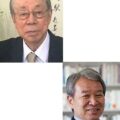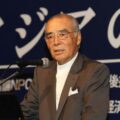The Southeast Asian Countries’ Strategy for China and New Expectations for Japan
Takagi Yusuke, Associate Professor, National Graduate Institute for Policy Studies

Prof. Takagi Yusuke
The basic goal of the Southeast Asian countries’ strategy for China is to maintain strategic autonomy and aim for economic prosperity amid the US-China conflict. They cannot ignore the US-China conflict in terms of either supply chains or the security environment. Cooperation with countries outside of Southeast Asia is also essential for both budget and technology reasons if they wish to strengthen their defensive capabilities.
In this article, I first give an overview of China’s presence based on a survey [The State of Southeast Asia: 2021 Survey Report] conducted by the Institute of Southeast Asian Studies (ISEAS) in Singapore. Next, I examine how the South China Sea situation, which is one of the reasons for concern about China, was discussed by the United Nations Commission on the Limits of the Continental Shelf (CLCS) in 2020. I outline the characteristics of US diplomacy in Southeast Asia mainly with reference to the visits of the Secretary of Defense in July. Then, I focus on Singapore and Vietnam, which were visited by the Secretary of Defense and the Vice President in succession, to consider the current situation of diversifying Southeast Asian diplomacy. Finally, I summarize the new role expected of Japan.
China’s Growing Influence and Concerns About It
ISEAS conducted a survey of 1,032 experts in Southeast Asia from the end of 2020 to the beginning of 2021. According to this survey, China is considered the most influential country in economic, political, and strategic terms in ten Southeast Asian countries. However, experts in all countries are concerned about Chinese influence. While only a small number of respondents said that American influence is large, many said they would choose the United States if they had to choose between the US and China. On the other hand, in countries outside Southeast Asia, when asked about the country that provided “the most help to the region during the pandemic,” China ranks first with 44.2%, Japan second with 18.2%, the EU third (10.3%), and the US fourth (9.6%). Taken together, China has actively engaged in so-called “mask diplomacy” since March 2020, but this has not dispelled concerns about China.
What ruined the effectiveness of mask diplomacy was the ongoing movement of China’s attempts to change the status quo in the South China Sea. In April 2020, governments were busy responding to COVID-19, and the Chinese government took the opportunity to unilaterally announce the establishment of Xisha District and Nansha District in Sansha City, Hainan, which faces the South China Sea. In June of the same year, the People’s Armed Police Law was revised to add protection of interests at sea and law enforcement to the tasks of the Armed Police, and in August, China conducted a test launch of aircraft carrier killer missiles and military exercises that restricted movement in a large area of the sea. Even in the survey mentioned above, 60% of all experts responded that they worry about China’s “assertive actions” and “encroachments in the exclusive economic zones (EEZ).”
With regard to the South China Sea issue, this survey only asked about the responses that ASEAN should take, rather than individual countries, but the answers show that the most desired responses are the formulation of a Code of Conduct (COC) between ASEAN and China “as quickly as possible” (70.4%) and responses based on “international law” (84.6%). On the other hand, only 11.8% said that the “military presence of other powers,” including the United States, should be enhanced to counter China. In addition, as many as 20.3% thought that ASEAN “cannot do anything because it lacks solidarity on this issue,” which indicates a degree of resignation about ASEAN. In fact, the gap between Southeast Asian countries, which seek to enforce norms through a COC, and China, which opposes it, are wide and the future uncertain. Amid this, some Southeast Asian countries are finding ways to solve problems through international law.
Strategy for China Based on International Law
The most active international law-oriented diplomacy has been that of the Philippines. The Philippines filed a complaint with the Permanent Court of Arbitration (PCA) to question the international law basis of the so-called “Nine-dash line” within which China claims sovereignty over waters and islands. The arbitration award of July 12, 2016 (hereinafter, award of 2016) does not recognize the legal basis for “historic rights” as argued by China and almost entirely supported the Philippines’ argument. However, President Rodrigo Duterte, who took office that same year, has adopted a stance of “shelving” this award. While President Duterte’s stance toward China has become conciliatory, neighboring countries have started exploring ways to respond through international law since the end of 2019, taking the award as a rare opportunity.
The CLCS has become the stage for this movement.[1] The CLCS was established under the United Nations Convention on the Law of the Sea (UNCLOS) and has the authority to review and recommend applications for extensions to each country’s continental shelf. If the CLCS can determine that a coastal nation has a continental shelf beyond 200 nautical miles, they will consider the limits of the continental shelf. The South China Sea’s coastal countries can use CLCS recommendations to signal their interests to other countries.
In December 2019, Malaysia notified the CLCS about its reasons for extending to its continental shelf in the South China Sea. In response, China sent a verbal note explaining its position, arguing that Malaysia’s verbal note violated Chinese sovereignty. China emphasizes the “Nine-dash line” based on “historic rights” to the Spratly Islands, saying that it is consistent with international law. The issue did not remain a bilateral issue, but several countries submitted their own claims to the CLCS.
First, in March 2020, the Philippine government countered that China’s claim does not accord with international law, including UNCLOS. In particular, touching on the award of 2016, the Philippine government made explicit its position that the so-called “historic rights” have no legal basis for the Spratly Islands. It is interesting that President Duterte’s conciliatory stance toward China is not necessarily in step with the China diplomacy of the Philippine government as a whole. Meanwhile, the Chinese government sent a new verbal note, criticizing the Philippine government’s arguments, reiterating its position of not accepting the award. That same March, the Vietnam government also sent a verbal note to argue that the Chinese government’s claims are not based on UNCLOS and that they violate Vietnam’s own claims. The Chinese government objected also to this, and talks have failed to reach any agreement.
More interestingly, Indonesia, which is not a party to this territorial dispute, also expressed its opinion. In May, the Indonesian government sent a verbal note to the CLCS in support of UNCLOS and the award of 2016, arguing that the “Nine-dash line” has no basis in international law. China refuted Indonesia’s arguments, saying that while there is no territorial dispute between China and Indonesia, their maritime interests are at odds, thus indicating a willingness to rattle Indonesia. Indonesia, on the other hand, referred to UNCLOS and the award of 2016 in an objection to China by arguing that none of the “rocks” of the Spratly Islands are islands that give rise to an EEZ.
Indonesia is not one of the disputed countries in the South China Sea, but it has had its own problems such as Chinese ships entering its Natuna Islands waters in 2020. This may be interpreted as taking a stand against China’s expansionist claims.
The US government has also made it clear that it will stand on the Southeast Asian countries’ side as the conflict between China and the Southeast Asian countries becomes more tangible. In June 2020, the US government sent a verbal note criticizing China’s rebuttal, while saying that it had no opinion on Malaysia’s verbal note. In addition, the then Secretary of State Mike Pompeo criticized China’s claims, referring to the award of 2016. Meanwhile, Australia, the UK, France, Germany, Japan, and New Zealand have each sent a verbal note to the CLCS that opposes China’s claims. As of August 2021, Malaysia’s claims continue to be deliberated.
The American Approach to Southeast Asia
Even after the establishment of the Biden administration, the line of US confrontation with China remains unchanged. The “Interim National Security Strategic Guidance” (provisional edition of the “National Security Strategy (NSS)),” which was published in March 2021, also issues warnings about China.
In July 2021, when the experts in the Southeast Asian countries expressed interest in the effects of US. diplomacy in Southeast Asia, the US. Secretary of Defense Lloyd Austin made visits to the region. This revealed two salient features of US foreign policy in Southeast Asia. Firstly, while the Trump administration had regarded diplomacy in Southeast Asia as a function of policy on China or even dismissed it, the Biden administration showed a stance of emphasizing diplomacy in Southeast Asia itself. As you can see in Secretary of Defense Austin’s Singapore speech, his message was largely directed to the Southeast Asian countries instead of China. Austin’s speech began with the COVID-19 measures as an urgent concern of the Southeast Asian countries now, and then signaled support for ASEAN’s diplomacy against Myanmar as well as emphasized that the United States has attended every meeting of the ASEAN Defense Minister’s Meeting-Plus (ADMM-Plus), thus highlighting the value of ASEAN. As for China, he explicitly stated that the “Nine-dash line” has no basis in international law and supported the positions of the coastal countries whose claims had been trampled by China.
The second feature is the emphasis on strengthening relations with the Southeast Asian countries, which are vital for confronting China. This is particularly evident in the choice of countries to visit. The visit to Singapore was likely intended to stabilize or expand the US Navy’s presence in the South China Sea. Since its confrontation with China over the South China Sea in 2014, Vietnam has remained opposed to China’s maritime expansion, while intending to strengthen and further promote relations with the United States. The final country visited was the Philippines, as there was a need to settle the quarrel over the visiting forces agreement (VFA) and solidify the presence of US forces in the South China Sea.
After the visits by the Secretary of Defense, Vice President Kamala Harris also visited Singapore and Vietnam. The United States seems to expect them to play a role in regional diplomacy that goes beyond bilateral relations with the US.
Singapore’s Active Extra-regional Diplomacy
Singapore is becoming a hub for investment inside and outside Southeast Asia, but there are two things to keep an eye on in addition to that. First, Singapore is the only country among the Southeast Asian countries that consistently supports the presence of the US military. The ISEAS survey above showed that ASEAN does not welcome the US presence, but the Singaporean government has allowed it, with a clear intention to balance the Chinese military presence. Consequently, Secretary of Defense Austin and Singaporean Defense Minister Ng Eng Hen concluded an agreement that reaffirms the US military’s right to use the military base of Singapore and allows Singapore’s Air Force to train in Guam. Singapore’s Changi Naval Base allows US Navy aircraft carriers to call at the port, and in recent years, it has been used by the Littoral Combat Ship (LCS) and the P8 patrol aircraft Poseidon to patrol the South China Sea and for freedom of navigation operations.
Second, Singapore is expected to host international meetings, most notable of which is the Asian Security Summit (known as the Shangri-La Dialogue) organized by the International Institute for Strategic Studies. The Shangri-La Dialogue, which has already been held 18 times (it was canceled in 2020 and 2021), has become a place for American and Chinese cabinet ministers and other key policymakers to advertise their national policies as well as express their positions on the policies of other countries. Moreover, although it was canceled due to the COVID-19 pandemic, the World Economic Forum (known as the Davos Conference) was to have taken place in Asia for the first time in 2021, as Singapore has been actively working to attract international meetings. While some observers who emphasize the influence of ASEAN also stress ASEAN’s convening power, Singapore is a country to have actually strengthened its ability to hold conferences by itself. It is clear that Singapore’s stance on facing China is by strengthening its ties with the United States and other countries outside Southeast Asia.
Diversifying Vietnam
It is important that Vietnam faces the South China Sea and the Mekong River.[2] The Mekong River is an international river that originates from the Tibetan Plateau and flows through China, Myanmar, Laos, Thailand, Cambodia, and Vietnam. In recent years, there has been continuous construction of hydroelectric power plants in China and Laos, causing problems with drought in the dry season. In particular, in Vietnam’s Mekong Delta, which is a major producer of rice, seawater flows backwards due to the decreased river volumes, threatening food security. With regard to Mekong basin development, while the focus has been on strengthening connectivity through the building of roads and bridges since the early 1990s, efforts to deal with environmental issues have become necessary in recent years. In 2020, Vietnam, the ASEAN chair at the time, stressed that the environmental issues of the Mekong are a challenge for ASEAN as a whole, though there was not necessarily so much support for this.
Meanwhile, there are so many cooperation frameworks about Mekong basin development that they are thought to be “thronging,” with multilateral cooperation becoming a focal point. Including the support of the Asian Development Bank, Japan’s history of cooperation in the development of the region goes far back. Additionally, in recent years, India, South Korea, China, and the United States have also launched their respective cooperation frameworks. For example, the US launched a cooperation framework with Mekong downstream countries excluding China in 2009. Also in her speech in Singapore, Vice President Harris referred to it as a result-oriented framework separate from ASEAN cooperation. In recent years, the United States has become increasingly involved in Mekong basin development, partly in the form of cooperation with Japan, such as with the Japan-US-Mekong Power Partnership.
Another important thing about Vietnam is that it has become a member of the CPTPP. Attending as an observer at the first meeting in 2010, it became an official member from the fourth meeting held in the same year. The only countries from Southeast Asia to participate in the TPP negotiations are Brunei, Malaysia, Singapore, and Vietnam; as of July 2021, only Singapore and Vietnam have completed domestic procedures. Considering this, Vietnam’s commitment to the free trade system stands out.
Vietnam’s participation in the TPP had three goals.[3] First, export expansion has become an important issue to offset the rapidly increasing trade deficit with China in recent years, and Vietnam aims to attract further inward direct investment and promote exports with the TPP as a “lever.” Second, participation in the TPP has accelerated the country’s economic structural reforms. The third goal is not economic but political. It is to signal distance from China and move closer to the United States. While the US withdrawal from the TPP has left the third goal somewhat unfulfilled, one reason that Vietnam could complete domestic procedures faster than Brunei and Malaysia is the emphasis on economic development and structural reform in itself.
To begin with, economic development and structural reform can also be seen as medium- to long-term strategies toward China. Economic dependence on China can be mitigated through the TPP and the FTA with the EU. Vietnam has already successfully attracted large-scale investments from South Korea and Taiwan, bolstering their presence with regard to supply chains for electronic devices.
The fact that the Vietnamese economy is built into the entirety of Indo Pacific supply chains means that Vietnam will be one of the front lines as supply chains increasingly become reorganized in the context of the US-China conflict.
New Expectations for Japan
According to the aforementioned ISEAS survey, Japan is the most trusted country in Southeast Asia. That is not news in itself, but what is interesting is the reason why. In the past, it was because of economic power, but no more than 23.6% of the experts gave that as the reason. Likewise, only 17.2% answered that Japanese culture and pop culture, for which there is often some expectation, are the basis for their trust. By contrast, 51.6% responded that they trust Japan because it is a “responsible stakeholder that respects and champions international law.” If we were to reflect the voices of these experts, the area in which the Japanese government should work in the future would have to be maintenance of the rule of law.
To give a specific example of policies that the Japanese government has implemented so far, there has been support for the development of legal systems such as civil law and civil procedural law in Cambodia as well as support of capacity building in national marine law enforcement agencies. The Japanese government’s Southeast Asia policy in recent years has long been part of the “Free and Open Indo-Pacific” initiative, but its core is maintaining and expanding international order based on rules. Meanwhile, the core of China’s “Belt and Road Initiative” (BRI) is infrastructure development, but when it comes to emphasizing the rule of law, the notable contribution is not infrastructure development itself but rule-making as seen in the “G20 Principles for Quality Infrastructure Investment.”
Conclusion
There is no doubt that the Chinese presence is growing in Southeast Asia, but that is not always seen as a positive. Southeast Asian countries have been strengthening their relations with the United Nations and countries outside Southeast Asia, such as Japan and the United States, while recognizing the limitations of ASEAN. What is interesting about Japan is the expectation that it can make contributions in a field different from the previous economic support. It is now up to the Japanese government to take into consideration Southeast Asian countries’ diplomacy with the UN and other countries outside the region, while seriously thinking through what concrete contributions can be made beyond finance.
Translated from “Firipin, Shingaporu, Betonamu no sentaku: Tonan-ajia shokoku no taichusenryaku to Nihon e no aratana kitai (The Choices of the Philippines, Singapore, and Vietnam: The Southeast Asian Countries’ Strategy for China and New Expectations for Japan),” Chuokoron, October 2021, pp. 76-83. (Courtesy of Chuo Koron Shinsha) [November 2021]
[1] Verbal notes are available at the website of United Nations Commission on the Limits of the Continental Shelf. https://www.un.org/depts/los/clcs_new/commission_submissions.htm
[2] Refer to Shoji Tomotaka, Mekon-Betonamu ni yoru ‘Anzenhosho-ka’ no Kokoromi (Mekong-Vietnam’s ‘securitization’ attempt) and the Sasakawa Peace Foundation International Information Network Analysis 2021. https://www.spf.org/iina/en/
[3] Refer to Fujita Mai, Betonamu no the TPP sanka—Doki to Keii (Vietnam’s the TPP participation—motivation and background) and the Institute of Developing Economies (IDE) the TPP analysis report 2016.
Keywords
- Takagi Yusuke
- National Graduate Institute for Policy Studies
- ASEAN
- Southeast Asia
- China
- United States
- US-China conflict
- Philippines
- Singapore
- Vietnam
- Institute of Southeast Asian Studies (ISEAS)
- survey
- South China Sea
- mask diplomacy
- international law
- United Nations Commission on the Limits of the Continental Shelf
- CLCS




